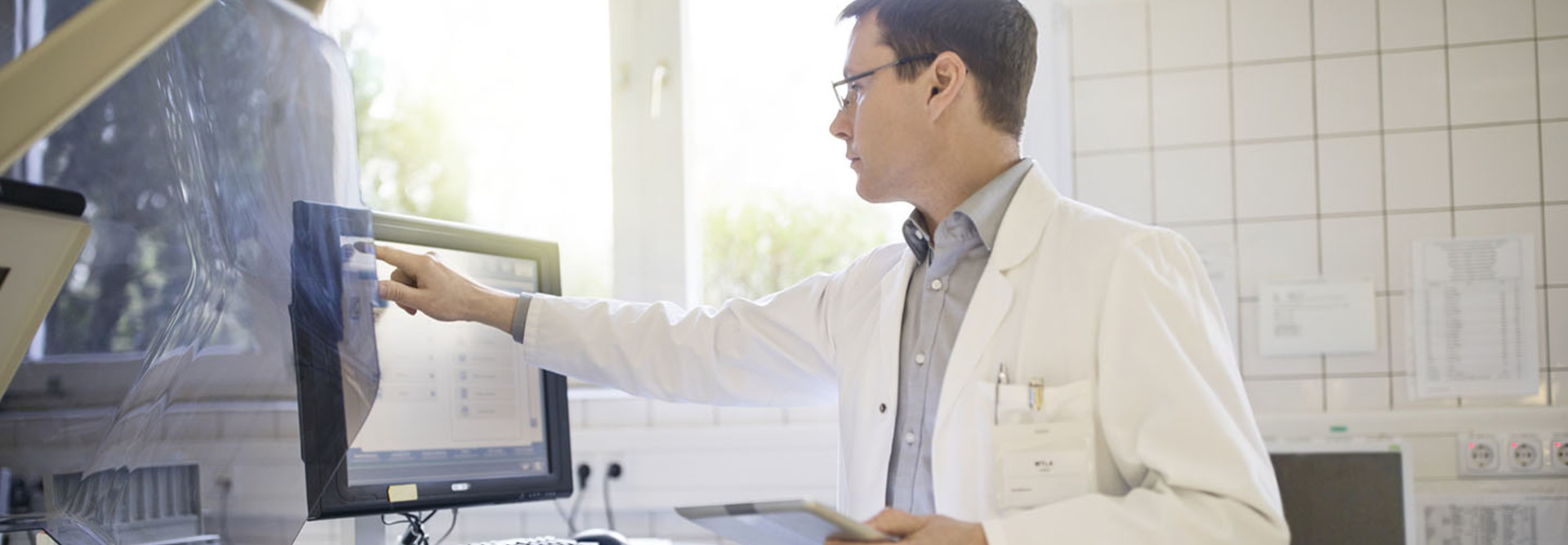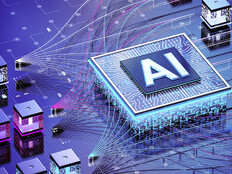Cognitive Tech Promises to Make State Medicaid Programs Smarter
Ridesharing apps, crowdsourced navigation, personalized advertisements: cognitive technologies are already at work transforming our lives and businesses. These products of artificial intelligence that mimic the human brain are performing tasks that only humans used to be able to do. So why can't state Medicaid programs be next? Well, according to a new report by Deloitte, they can be — and the technology may have much to offer these large and expensive statewide programs.
In 2016, Medicaid programs accounted for nearly $575 billion in spending. Given the size of the programs and how many lives they touch, states and care organizations are always at work looking for ways to streamline the programs while helping Medicaid members improve health outcomes. Applying cognitive tech, such as the Internet of Things and machine learning, could be a way for states to see a greater return on investment on improving patient care.
"Smart technologies could provide that possibility through the application of intelligent programs that can process vast amounts of data to understand patterns and make predictions about a member's future health outcomes or healthcare utilization," the Deloitte report's authors note. They add that remote patient monitoring (RPM) data can help patients live independently and geospatial information systems (GIS) can improve access to care.
SIGN UP: Get more news from the StateTech newsletter in your inbox every two weeks
Modern Infrastructure Enables Modern Medicaid
To make these types of use cases a reality, however, legacy systems just won't cut it. Medicaid programs will already need to have modernized platforms in place, particularly with two architectural advancements that can make Medicaid truly smart:
-
Open Application Programming Interfaces (APIs): An API, as the report defines it, allows two pieces of software to interact with one another, and an "open" API allows the owner to securely authorize other users quickly and efficiently. Current systems don't have the ability to open an API, which makes sharing info and permissions with external systems difficult and costly. "With open APIs, Medicaid systems can easily share data with other systems," the report adds, noting that Medicaid agencies can then use these shared data sets to "improve service delivery and augment predictive analytics to deliver targeted preventive care."
-
Cloud Computing: States and healthcare organizations across the country are gradually taking advantage of the cloud to improve operations and care capabilities. Medicaid programs stand to gain the same benefits. "Among other things, migration to the cloud allows states to use inexpensive cloud-based solutions such as machine learning from major public cloud providers such as Google, IBM and Microsoft," the report notes. These public cloud services can provide cost-effective ways for Medicaid providers to implement machine learning. "With their systems in the cloud, Medicaid agencies can use these inexpensive, cloud-based, machine learning-enabled applications to deploy chatbots that improve customer service and detect important patterns in member data that can inform patient care," the report's authors add.
Medicaid Programs Can Capitalize on Smartphone Tech
Organizations all over the country are already making use of technologies such as machine learning, IoT and GIS at an increasing pace. In fact, 70 percent of Medicaid members are already making use of IoT in the form of smartphones, according to the Deloitte report.
The report points to two ways to capitalize on this smartphone use to streamline systems and improve care models.
The first is through remote patient monitoring. Hospital trips are costly, both for healthcare organizations and for the patients involved. Medicaid programs can reduce hospital trips by better monitoring what patients do outside of a healthcare organization's setting via telehealth.
These remote patient monitoring systems can call on not just smartphones to connect patients with doctors and monitor patient movements, but also other IoT devices, such as in-home motion sensors, which can detect patient movement in their home and determine behavior, such as medication adherence, exercise or even if they have fallen.
"The Medicaid agency's open API platform would allow the network to access data about the member, including demographic and [electronic health record] EHR data, and can combine this with RPM data to detect patterns and trends, and make predictions about a member's risks and utilization," the Deloitte report states.
The second way to capitalize on smartphone use is to optimize nonemergency medical transportation services via ridesharing apps or other methods. With ambulances being one of the costliest ways to get around, many places, such as Houston, have already made moves to cut back on the number of people using emergency transport unnecessarily — at the cost benefit of all involved. Houston set up a telehealth service that seeks to determine if emergency transport is necessary and, if not, schedules taxis to help get patients to the care they need. Meanwhile, nonemergency medical transport is taking off in other ways across the country through healthcare organization partnerships with rideshare companies such as Uber and Lyft.
The Deloitte report's authors suggest adopting more programs like these and urge Medicaid agencies to plug directly into the platform in order to monitor performance for ride vendors and ensure there is no fraud, waste or abuse.
The Future of Smart Medicaid
Up-and-coming technologies also promise to help Medicaid programs streamline patient care. Chatbots, or artificial intelligence-backed programs that mimic human conversation and can answer common questions, can help members get faster answers while freeing up Medicaid staff to work on other projects. Meanwhile, GIS can be used to track the spread of disease and ensure access to care.
While these goals may seem lofty, if Medicaid programs start small and aim for a cohesive smart framework, more streamlined, cost effective and efficient care systems are possible for Medicaid users, the report notes.
Moving forward, of course, the Deloitte report's authors warn that these new technologies and systems won't be a panacea for many of the issues that Medicaid programs face, and that they will need to be fully integrated to work.
"Smart technologies implemented in silos don't constitute a smart Medicaid system — for that, they need to be integrated into a cohesive framework to provide a comprehensive set of solutions that can help solve some of the challenges associated with running a program that is as large and complex as Medicaid," the report's authors note.









